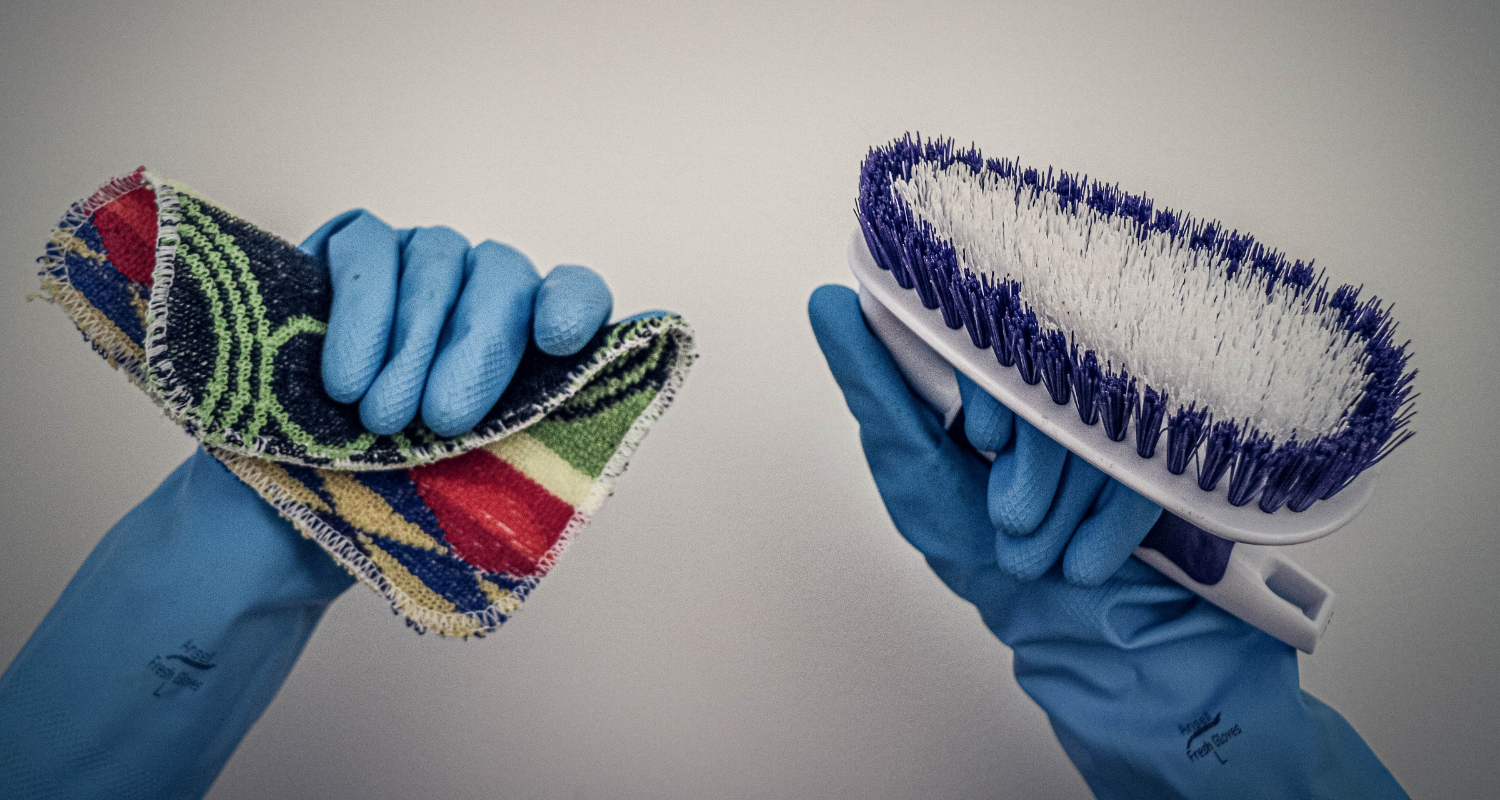
In many ways, owning a home is like owning a car. Both can be a significant financial investment, so a purchase decision often involves lots of research, comparison, and seeking expert advice. Then, to preserve value and optimize functionality, houses and cars both require ongoing maintenance. That means a home maintenance checklist of some sort to keep you up to date with everything you need to do. There’s more to home upkeep than spring cleaning — though the annual fuss does serve as a solid reminder to dust those ceiling fans and finally tackle that catch-all hallway closet — so it’s important to be aware of your home’s maintenance needs through the seasons. After all, you can’t exactly drop your house off at the dealership for routine service like you can with your car! From freshening filters to caulking cracks, there’s nearly always something that is due for attention around the house. Fortunately, this doesn’t have to mean spending every weekend at your local home and garden center. Whether you’re an avid do-it-yourselfer or you prefer to hire a pro, we’ve compiled a comprehensive home maintenance checklist to help you keep your home in tip-top condition all year long. Grab a calendar and add these tasks to your monthly to-do list. Want to ensure consistency? Make a note to tackle these home maintenance tasks on the first Saturday of every month. Anything around your home that uses an air filter is game for this monthly check-up. Think about your HVAC system, air purifiers, humidifiers, bathroom extractor fans, the range hood above your stove, and even your vacuum cleaner. Clean or replace filters as needed. It’s easy to forget that dishwashers need cleaning of their own, but at the very minimum, give the filter a good rinse every month. If your machine uses dishwasher salt to mitigate hard water, make sure the reservoir is topped off. This is also a good time to run a cleaning cycle to keep smells at bay and dishes sparkling. Yep, these need regular cleaning, too! Check the drum for trapped hair and lint, run a cleaning cycle, and wipe down the door seal if yours is a front-loading model. For your dryer, thoroughly clean out the lint trap (use a vacuum for extra dust-removal power). If your refrigerator has condenser coils, give these a quick monthly vacuuming. Dust and dirt build-up can reduce your fridge’s ability to cool effectively. These potentially life-saving devices are crucial, so make sure they’re equipped with fresh batteries and are free from dust accumulation. Press and hold the test buttons to make sure all detectors are in working order. This is an easy task that can potentially save you hundreds, or even thousands, of dollars. Look underneath all sinks, spigots, and any other water connections to check for leaks. Keep these tasks in mind every three months. If you have a shower head filter or a whole-house water softening system, check it at least once per quarter and service per manufacturer recommendations. This includes things like doorbells, garage door openers, home security systems, video monitoring, landscape watering systems, and more. If it falls into the category of something you rely on to work when you need it — test it regularly. If you have a guest bathroom, a finished basement, a detached garage or home addition, or anywhere else that is low-traffic but has a water connection, make it a habit to check these areas for water leaks. Give the toilets a flush and run the tap for a few seconds to make sure all is well. If you have granite, quartz, or marble countertops, use a stone sealant. Tile counters? Clean and seal the grout. Butcher block counters? Oil them down. Regularly treating your countertops not only makes them look nice, it also helps them resist scratches and staining. If you live somewhere with a stable year-round climate, your home may not be as susceptible to the hazards of temperature swings and varied weather conditions, but it’s important not to overlook these important aspects of home upkeep. Leaves, sticks, and other debris can collect in gutters and downspouts and cause costly damage. Especially if you live in a warm climate and will soon be relying on air conditioning, spring is ideal for having your HVAC inspected and serviced by a professional. Termites, cockroaches, mosquitos, mice, and other unwelcome nuisances can often be managed with regular pest control. Your local pest control expert will be able to advise you on how often your home should be sprayed, but if you’re not already on a service schedule, spring is a great time to get started. “If you have landscaping, that can be pretty expensive,” says James Delgado, a top real estate agent in Santa Fe, New Mexico, who works with 72% more single-family homes than the average area agent. In addition to seasonal tree trimming, lawn reseeding, and flower planting, valuable trees and shrubs may benefit from special sprays to keep pests at bay and protect against diseases that may harm the bark, leaves, or roots. “Out here, we have high-elevation trees that we have to have sprayed twice a year,” says Delgado. “You want to keep up the landscape maintenance; that’s going to preserve value to your property.” This can include power washing the siding, hosing down the driveway, touching up trim paint, washing your windows, and cleaning or replacing damaged window screens. Who can resist a good seasonal tidying? Go ahead and declutter, organize, and freshen up your home before summer arrives. Oh, and if you have ceiling fans, make sure they’re set to spin counter-clockwise and push air downward to create a summer-friendly breeze. If you have a deck or a porch, inspect them for loose boards and wobbly railing, and consider whether it may be time for a new coat of weather protection. Replacing the roof of a house is an expensive, time-consuming project, so do yourself the favor of regularly inspecting and repairing the roof of your home, if you can. Spring is a good time for roof maintenance as winter has passed and any cold-weather damage can be promptly repaired. You’ve (hopefully) already tended to your home’s landscaping needs in the springtime, but summer weather can be hot, dry, and detrimental to your lawn. Be sure yours has the water and nutrients necessary to withstand the seasonal sunshine. Long summer days are ideal for maintaining wooden fences. Make any necessary repairs, then give it a fresh coat of paint or sealant to keep your fence looking fresh. If repainting your home is on the docket, summer is usually a good time to cross that off the list. Same goes for sanding and staining the deck (if you didn’t already do it in the spring), replacing windows, and inspecting water lines. Fall home maintenance can look a lot like spring home maintenance. Take time this season to once again clean your gutters and downspout, and service your HVAC before the chill of winter. Reverse your ceiling fans, if applicable. If you have a water heater tank, drain sediment and then wrap the tank to help maximize cold-weather efficiency. If freezing temperatures are a wintertime reality where you live, cover your water spigots and wrap exposed pipes to help prevent freezing. If your home has a sump pump in the basement or any other water-gathering area, check to make sure it’s in proper working order. If you have a fireplace, whether it’s wood-burning or gas, be sure to have it cleaned and serviced before winter use. Caulking up any cracks and air leaks is one of the easiest ways to make your home more efficient and comfortable. Take care of this minimal-expense task during the fall to help save on winter heating costs. While temperatures are still mild, store your outdoor furniture, put away any summertime landscaping tools, and winterize your sprinkler system. Don’t let ice linger; clean up and remove icicles and ice dams as soon as you see them. Fluctuating temperatures and precipitation can cause leaks. Regularly check your attic, basement, and garage for signs of moisture. Keep an eye on pipes and water connections, too. Winter is great for cozying up, but it’s also an ideal time to do all those indoor projects that are so easy to keep putting off. If nothing else, give your home a thorough deep-clean during the winter to make spring cleaning a breeze. It’s worth mentioning that there is no one-size-fits-all checklist for home maintenance. Depending on the style, age, and condition of your home, and its various systems, components, and appliances, your maintenance needs may run on a different schedule. User manuals are a great reference for appliances, and local service experts — like the ones you call on for heating and cooling, pest control, roofing, plumbing, and so on — are often your best resource for upkeep advice that is tailored to your home and climate. If you’ve recently purchased your home, inspection reports can be another valuable tool. “We have really good home inspectors here in Santa Fe,” says Delgado. “They usually include a checklist of items; of course, there’s what they found during the inspection, but they also include a list of annual regular maintenance and preventative maintenance on the home, which is very helpful.” In short: Use our checklist as a starting point, then adapt it to your home’s needs. Many of us probably recognize our own limitations when it comes to household maintenance and repairs. Being able to hang a shelf or tighten a leaky faucet does not necessarily mean that we possess the skills to inspect a septic system, so when it comes to the decision of whether to hire someone or go at it alone — be realistic. “If you’re knowledgeable in a certain area and you can take care of some of the annual maintenance, I would go ahead and do that because you’re definitely going to save money, but there’s a limit,” says Delgado. Sometimes, he says, “I just want to hire a professional I trust to take care of something that’s beyond my scope and expertise.” Delgado recommends that every homeowner keep a set of basic tools on hand. Some of those tools may include: You can purchase complete tool kits starting at less than $25 that come in a box for easy storage, or you can assemble your own arsenal. With countless tutorials available on platforms like YouTube and Reddit, it’s never been easier to find a helping hand online to up your DIY game. We’ve included a condensed, bulleted checklist for you to print out and refer to as you please. You may also find it helpful to start a maintenance folder for your home, complete with the contact details of contractors and service providers, along with any recent inspection or repair reports. Keeping everything together in one place will make it easier to update your file and stay on top of what’s next for your home’s maintenance. Above all, remember that home maintenance is a journey, not a one-time call to action. Managed mindfully, you’ll save money, preserve value, and enjoy a comfortable home for years to come. “Everything revolves around preventative and continual maintenance,” says Delgado. “Sometimes when we let those things go for the sake of saving some money in the short term, it ends up expanding to a long-term expense.” Header Image Source: (by vicki / Unsplash)Monthly home maintenance
Check your air filters
Clean your dishwasher
Clean your washing machine and dryer
Clean your fridge coils
Test smoke and carbon monoxide detectors
Check for water leaks
Quarterly home maintenance
Check your water softener
Test functionality
Check low-use areas
Treat your countertops
Seasonal home maintenance
Spring to-dos
Clean your gutters
Service your HVAC system
Pest control
Landscape maintenance
Spring-clean your home’s exterior
Spring-clean your home’s interior
Check the deck
Inspect the roof
Summer to-dos
Lawn maintenance
Mending fences
Tackle big exterior projects
Fall to-dos
Springtime repeats
Drain and wrap your water heater
Winterize your pipes
Test your sump pump
Service your fireplace
Caulk and seal
Tidy up outdoors
Winter to-dos
Eliminate ice
Check for leaks
Take on interior projects
Mindful maintenance
Be prepared for DIY, but know when to hire out
Time to get started



